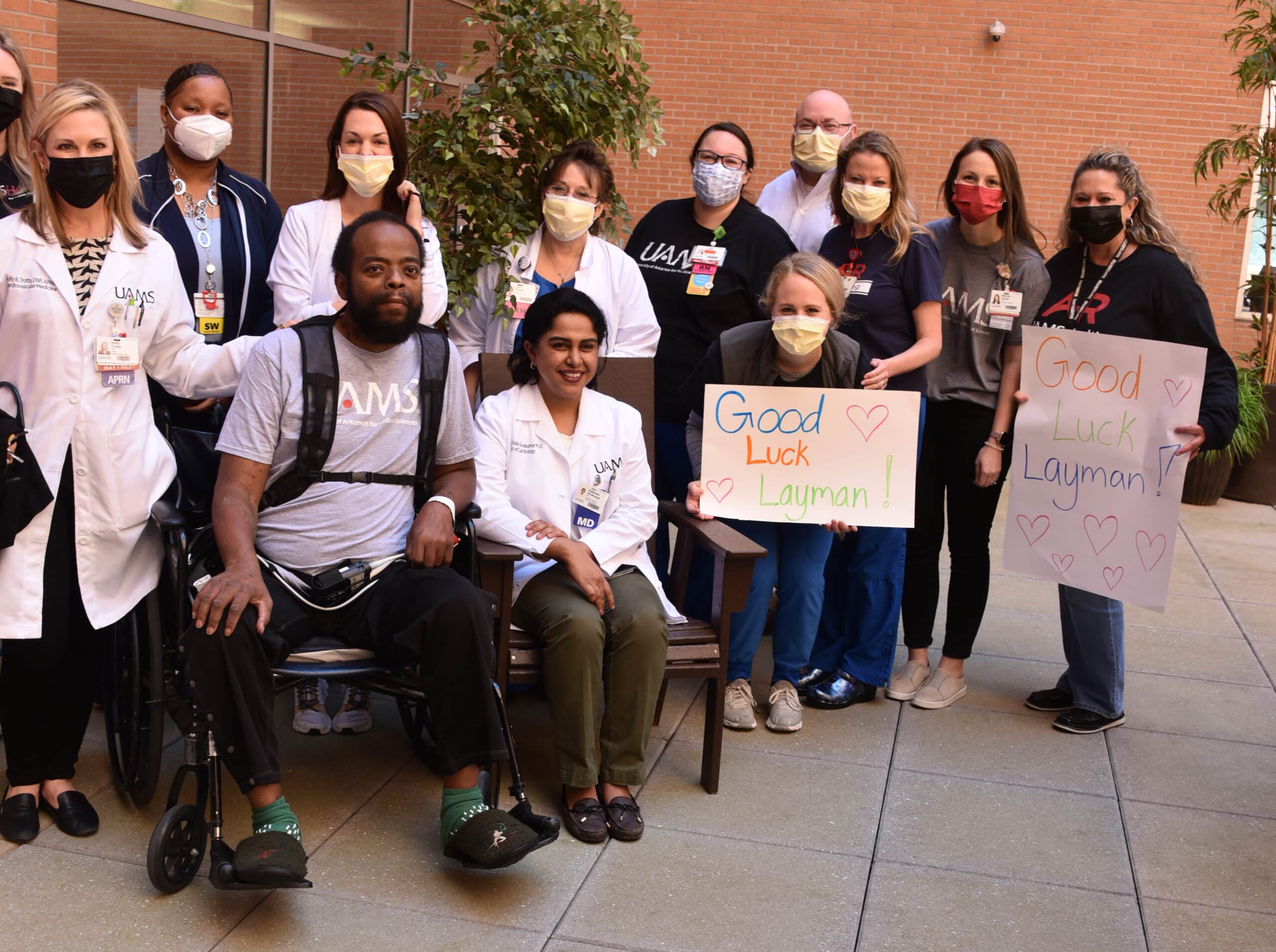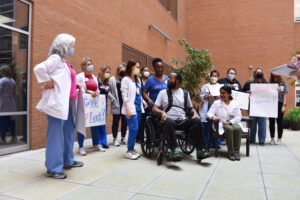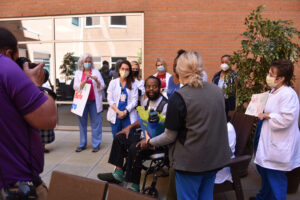First LVAD Recipient at UAMS Ready to Head Home, Get Back to Fishing
| LITTLE ROCK — The first patient to receive a Left Ventricular Assist Device (LVAD) through the new Heart Restoration Program at the University of Arkansas for Medical Sciences (UAMS) is being discharged today after a successful procedure Feb. 28.
The device, called the Heart Mate 3, is an internally implanted mechanical pump that supports blood circulation in people living with advanced heart failure, when the heart is too weak to pump blood adequately on its own. The device may be used as a bridge to heart transplantation or as a long-term treatment in lieu of transplant.
It attaches to the heart and takes over the functioning of the left ventricle, the main pumping chamber of the heart, restoring heart function to normal levels. A cable connects it through a small hole in the abdomen to an external battery-operated control unit that can be attached to a belt. Batteries connected to the pump by a cable can be carried by the patient in an over-the-shoulder holster.
“The success of this first LVAD procedure signals a new era at UAMS as we work to expand our heart services, to include transplants by the end of the year, in keeping with our mission of providing top-notch care for all people in Arkansas, where we have the third-highest death rate from heart disease in the nation,” said UAMS Chancellor Cam Patterson, M.D., MBA, who is also a cardiologist. “We are committed to the success of this program, which includes providing training in advanced heart services for future medical professionals.”
“This has been an exciting time at UAMS. I am delighted that with the skill and dedication of a large multidisciplinary team, we have reached this landmark,” said Paul Mounsey, M.D., Ph.D., director of the UAMS Internal Medicine Department’s Division of Cardiovascular Medicine. “But this is only the first step in a process that will, in the upcoming months, lead to transplantation of the both the heart and lungs. And at that point, UAMS will have a comprehensive thoracic organ restoration service.”
Layman Roseby, 52, of Pulaski County became the first UAMS patient to receive an LVAD since the UAMS Health Heart Center began its Heart Restoration Program in January. The program offers a full range of high-end services for patients with advanced heart failure who have already undergone medical therapy, have experienced frequent hospitalizations and have an impaired quality of life.
Roseby was already being treated for hypertension, Type 2 diabetes and an enlarged heart, and had previously had two strokes. He drove himself to the UAMS Emergency Room when he began experiencing shortness of breath as a result of cardiogenic shock, in which the heart suddenly fails to pump enough blood to the body.
Initially, he received a temporary Impella 5.5 heart pump, but his condition continued to deteriorate, prompting heart surgeon Jay K. Bhama, M.D., who is a professor in the College of Medicine and chief of the UAMS Division of Cardiovascular Surgery, to implant an LVAD.
Bhama recently joined UAMS exclusively as the surgical director of the UAMS Health Heart Center and director of the Heart Restoration Program. He is fellowship-trained in advanced cardiac surgery, cardiothoracic transplantation and LVADs, and has more than 15 years of experience in those fields.
“Mr. Roseby presented a unique challenge to our cardiovascular program at UAMS with advanced heart failure so severe it was only treatable by heart transplantation or LVAD surgery,” Bhama said. “The clinical and administrative teams at UAMS brought the heart restoration program to fruition for Mr. Roseby and countless future Arkansans who will benefit from these surgical technologies.”
He added that “Mr. Roseby reflects our mission in the Heart Restoration Program to restore patients’ organ function so as to restore their quality of life.”
After surgery, Roseby’s breathing improved immediately, allowing removal of his breathing tube the same day. He was able to walk a few days later. While ongoing pain from other issues slowed his progression and contributed to him remaining hospitalized for two months, he said while preparing for discharge that he felt “wonderful” compared to how he felt before.
Roseby’s recovery will include home therapy, frequent monitoring by his mother who will be his live-in caretaker and visits to UAMS several days a week. The former truck-driver who loves to fish with his two dogs in tow said he is looking forward to resuming normal activities. He thanked Bhama and others at UAMS, particularly Shelly Tiner, RN, LVAD program coordinator, for “sticking with me every step of the way” and encouraging him to do exercises when he didn’t feel like it.
“I was praying for God to send angels to surround me, and here they are,” he said. “I feel blessed.”
The Heart Restoration Program is working to provide heart transplants by the end of the year and plans to offer lung transplants in early 2023. Eventually, UAMS plans to proceed to combined heart-lung and other dual-organ transplants.
Currently, UAMS has the only liver and kidney transplant programs in the state.
UAMS is the state’s only health sciences university, with colleges of Medicine, Nursing, Pharmacy, Health Professions and Public Health; a graduate school; a hospital; a main campus in Little Rock; a Northwest Arkansas regional campus in Fayetteville; a statewide network of regional campuses; and eight institutes: the Winthrop P. Rockefeller Cancer Institute, Jackson T. Stephens Spine & Neurosciences Institute, Harvey & Bernice Jones Eye Institute, Psychiatric Research Institute, Donald W. Reynolds Institute on Aging, Translational Research Institute, Institute for Digital Health & Innovation and the Institute for Community Health Innovation. UAMS includes UAMS Health, a statewide health system that encompasses all of UAMS’ clinical enterprise. UAMS is the only adult Level 1 trauma center in the state. UAMS has 3,275 students, 890 medical residents and fellows, and five dental residents. It is the state’s largest public employer with more than 12,000 employees, including 1,200 physicians who provide care to patients at UAMS, its regional campuses, Arkansas Children’s, the VA Medical Center and Baptist Health. Visit www.uams.edu or uamshealth.com. Find us on Facebook, X (formerly Twitter), YouTube or Instagram.
###



